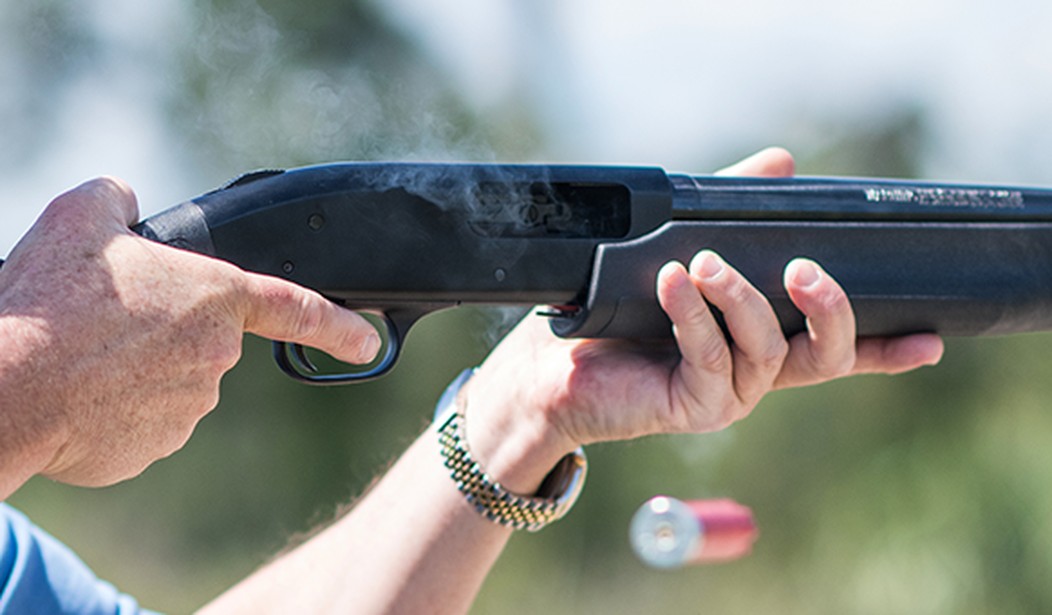Gun control fans aren’t happy. They can’t seem to get their way through either Congress or most state legislatures. It’s frustrating, to be sure.
However, it seems that some people believe there’s an alternative. Basically, they think the answer is for the gun industry to just start making smart guns.
While many politicians at the state and federal levels are unable to pass gun reform legislation, there are other things that can be done to defend both human life and the constitutionally protected right to own a gun. The private sector must step up to make guns safer in order to reduce gun violence.
In today’s polarized political climate around gun culture, little can be done at the federal level to reduce gun violence and encourage the passage of meaningful legislation to reduce the prevalence of guns in American life. Experts have taken steps to attempt to reframe gun violence as a public health issue and have changed their language from “gun control” to “gun violence prevention” in an attempt to take control of the narrative. This rhetorical adjustment moves from the idea of “taking your guns” to one of safe gun purchase and use. If these cultural changes become more mainstream, more can be done to pass legislation to reduce gun violence.
In the meantime, other steps can be taken to mitigate the risks posed by guns. If comprehensive policy can’t be passed, the other option is to turn to the private sector to address this problem. If gun manufacturers made guns safer, it would help to prevent a significant amount of gun violence deaths. Obviously, this would not solve all of the United States’ problems regarding guns, but it would be a start.
There are technological innovations that could be implemented in guns to make them safer for consumers. One innovation is designing guns that only work for specific people by connecting the guns to RFID tags on watches or rings. Another is using biometric technology by requiring proof of identity to use the gun, such as voice activation, a retinal scan or a fingerprint. The final strategy is using “microstamping” technology so that guns imprint unique marks on the cartridge casings as the rounds are fired. In a similar approach, in May, the Justice Department proposed a rule to require gun-making kits to include a serial code in order to crack down on “ghost guns,” untraceable weapons assembled by individuals in their private residences rather than licensed manufacturers.
Oh, they’re so adorable when they think they know what they’re talking about, aren’t they?
Alright, let’s break these down one by one.
First, let’s understand why the private sector isn’t already providing this, assuming the technology works as advertised (more on that in a bit). After all, wouldn’t “safer” guns be better for everyone?
Sure. Except that no one wants them.
Seriously, talk to the gun-buying community sometimes. I have. I have yet to encounter a single gun buyer that would gladly pick up a smart gun tomorrow if their local gun store had one at a competitive price. If none of the established customer base wants one, then it would be imperative to attract people to form a completely different customer base. The problem is that most people who are interested in buying guns already have them or are quite content to buy what’s already being sold.
In short, there are no customers interested. Companies aren’t going to push products that absolutely no one wants.
And there’s a reason for it. A lot of them, actually. One is that none of the technology in question is actually proven. A firearm is one of those things you need to work the moment you need it to work. My Glock 19 does. My buddy’s 1911 does. Another friend’s GP-100 in .357 does as well.
These are firearms we can trust with our life.
Not only that, but if my Glock or my friend’s 1911 or any other semi-auto jams, there’s the old “tap-rack-bang” trick to get the weapon back up and running in the blink of an eye.
Tell me, just how do you get a biometric scanner to recognize your fingerprint if it’s being stubborn? If it doesn’t work, you and your family may die.
I’d just love for the author to explain how this makes a gun safer. I really and truly would.
Just yesterday, I touched on the problems with RFID technology applied to guns. That hasn’t exactly changed overnight, now has it? The author doesn’t address these concerns, probably because she wouldn’t quite know how to do so.
And don’t get me started on microstamping. That’s a technology that’s been talked about for years and still doesn’t work.
I think that just leaves “ghost guns.” However, what the author doesn’t recognize is that manufacturing guns at home is still legal and you can do so without a serial number so long as you don’t intend to sell it. While the proposal will hurt those who want incomplete receivers, there are still plenty of tools out there that will allow you to make your own firearms. The policy change won’t actually stop that.
So really, the most impressive thing here is just how wrong she is about the effectiveness of just about everything. In fairness to the author, that is pretty impressive. It takes work being that wrong about stuff, so go her!








Join the conversation as a VIP Member